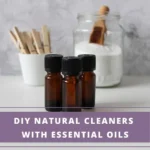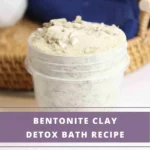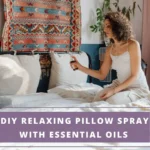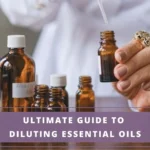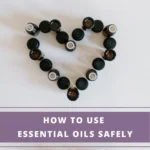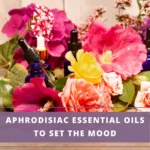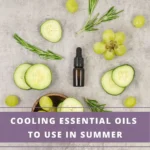As an Amazon Associate I earn from qualifying purchases. See Full Disclosure Here
Passive diffusers for essential oils are a fantastic way to enhance the ambiance of your home or office without the need for electricity or heat.
These devices rely on natural methods to disperse the essential oil molecules into the air, creating a pleasant and inviting atmosphere.
Whether you want to relax, uplift your mood, or enjoy the therapeutic effects of aromatherapy, passive essential oil diffusers are a great option. And their sleek, elegant look makes them the perfect addition to any space.
While active diffusers like ultrasonic or nebulizing diffusers are popular choices, passive diffusion offers a unique and natural approach to dispersing essential oil scents in smaller spaces.
In this ultimate guide, find out everything you need to know about passive essential oil diffusers, their benefits, types, and how to choose the right one for your needs.
What Are Passive Diffusers For Essential Oils?
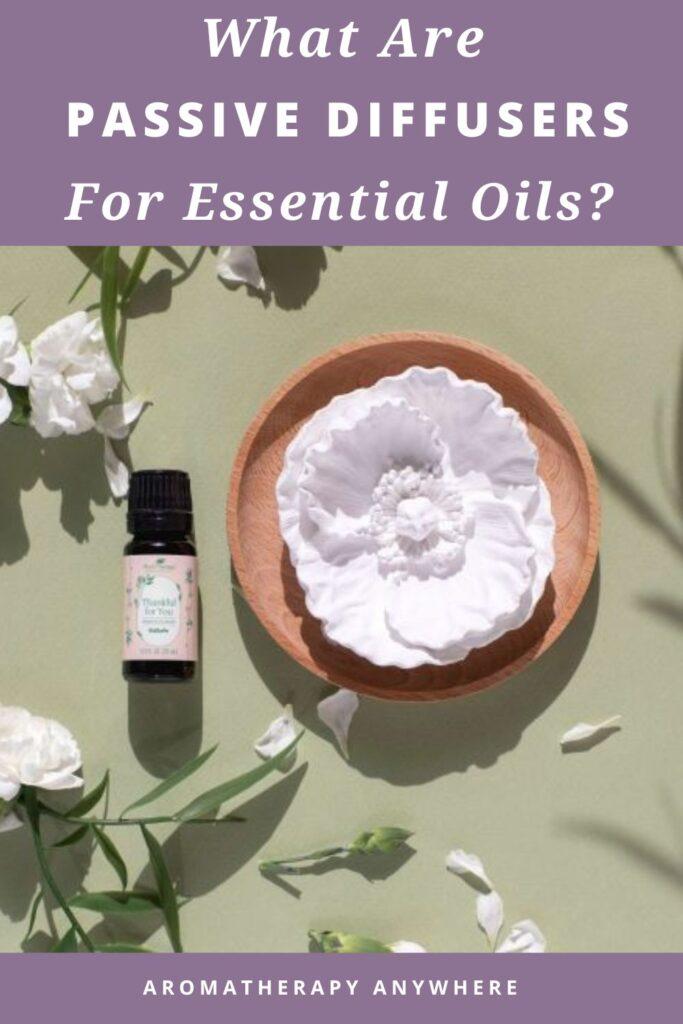 Passive diffusers are devices that release essential oils into the air through natural means, such as evaporation or absorption. The device is typically composed of some sort of porous, semi-absorbent material such as terracotta, clay or soapstone.
Passive diffusers are devices that release essential oils into the air through natural means, such as evaporation or absorption. The device is typically composed of some sort of porous, semi-absorbent material such as terracotta, clay or soapstone.
These materials absorb and slowly release the natural scents of essential oils into the air. They offer a subtle and continuous diffusion of essential oils, providing a gentle and long-lasting fragrance.
Unlike active diffusers that require electricity or heat to disperse the oils, passive essential oil diffusers work silently and can be placed anywhere in your home or office.
Because the material used is porous and absorbent, and the scent is released slowly, the aroma will last for hours without the need for electricity or batteries.
They are better suited for small rooms because the nature of passive diffusion is such that the aroma is only dispersed over a small area.
Passive diffusers for essential oils are available in a variety of beautiful designs. Their sleek looks, elegant design, and budget-friendly prices make them the perfect gift for any occasion, whether you’re looking for a thoughtful hostess gift, stocking stuffer gift, or an addition to your aromatherapy gift basket.
Active vs. Passive Diffusers: What’s the Difference?
 Before diving into the world of passive diffusion, it helps to first understand the difference between active and passive diffusers.
Before diving into the world of passive diffusion, it helps to first understand the difference between active and passive diffusers.
Active diffusers, such as ultrasonic diffusers and nebulizing diffusers, utilize electricity, ultrasonic vibrations, or airflow to disperse essential oils into the air. These diffusers quickly fill large spaces with the aroma of your favorite oils.
On the other hand, passive diffusers rely on natural methods to release the scent of essential oils without the need for a stimulus.
They provide a more subtle and gentle fragrance, making them perfect for those with aroma sensitivities or for small spaces that don’t require a strong aroma output.
Benefits of Passive Diffusion
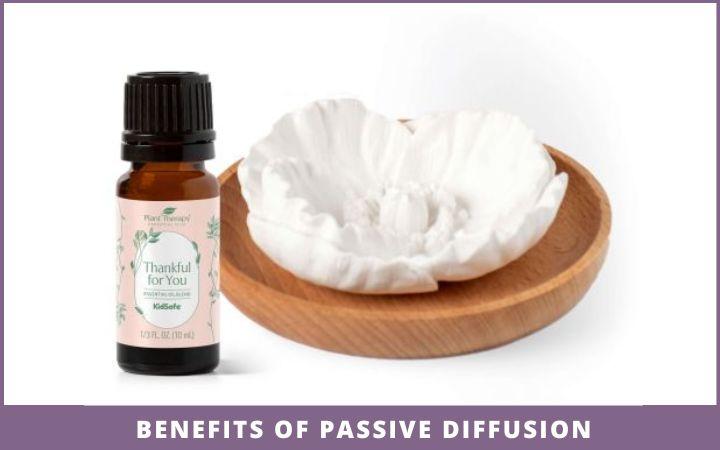 Passive diffusion offers several advantages that make it a compelling choice for small spaces.
Passive diffusion offers several advantages that make it a compelling choice for small spaces.
Ease of Use
Passive essential oil diffusers are incredibly easy to use. Simply add 5-6 drops of your favorite essential oil to the diffuser, and it will take care of the rest.
Convenience
Unlike active diffusers, which require electricity to diffuse aroma, passive diffusers operate without any external power source. That means you can use them anywhere without the need for a power source.
Gentler Aroma
Passive diffusers emit a subtle and gentle aroma of essential oils, making them an ideal option for individuals who prefer a more subtle scent experience.
If you find the intense scent output of active diffusers overpowering, switch over to a passive diffuser for essential oils. You’ll enjoy the subtle aroma without overwhelming your senses.
Safety
Since these devices don’t require electricity, water, or heat to disperse the aroma of essential oils, they are safer to use. You can confidently leave the room without worrying about potential accidents, especially if you have kids or pets.
Long-Lasting Aroma
These diffusers provide a continuous and long-lasting aroma that can fill a room with the pleasant scent of your chosen essential oil.
Exploring Different Types of Passive Essential Oil Diffusers
 There are a few different types of passive diffusers for essential oils that you can choose from. Each type offers a unique way to enjoy the gentle aroma of essential oils.
There are a few different types of passive diffusers for essential oils that you can choose from. Each type offers a unique way to enjoy the gentle aroma of essential oils.
1. Reed Diffusers
Yes, reed diffusers are a type of passive diffuser for essential oils.
A reed diffuser consists of delicate rattan or bamboo reeds placed into a narrow-necked bottle that contains an essential oil diluted with a carrier oil.
To use a reed diffuser, simply place the reeds into the essential oil bottle. The reeds absorb the oil and release a steady and subtle aroma into the air.
Reed diffusers are the perfect addition to small spaces and can delicately invigorate any room. They are known for their elegant design and slow, consistent diffusion.
Related Reads:
How To Use A Reed Diffuser: A Comprehensive Guide
DIY Reed Diffuser With Essential Oils +Best Buying Options
2. Clay, Terracotta, Or Sandstone Diffusers
Clay, terracotta, and sandstone diffusers offer a natural and rustic approach to passive diffusion. These types of diffusers are crafted from porous materials that have naturally absorbent properties.
To use this type of passive diffuser, apply 5-6 drops of your favorite essential oil onto the device. The material absorbs the oil and then slowly releases the fragrance into the atmosphere over time.
Clay, terracotta, and sandstone diffusers are often portable, allowing you to enjoy the benefits of aromatherapy wherever you go.
3. Ceramic Diffusers
Ceramic diffusers are made from porous ceramic material. They work in a similar manner as clay and terracotta passive diffusers for essential oils. The difference is ceramic devices have a more contemporary look rather than a rustic look.
They have a small opening or a hollow space where you can place a few drops of essential oil. The ceramic absorbs the oil and gradually releases it into the air, filling the room with a gentle aroma.
4. Essential Oil Jewelry
If you prefer a more personal and wearable diffuser, essential oil necklaces and bracelets are an excellent choice.
Essential oil necklaces feature a specially designed pendant that holds a small, colored felt pad. You apply a few drops of essential oil onto the pad. As you wear the necklace with a pendant, your body heat gently warms the oil, releasing its aroma throughout the day.
Essential oil bracelets may be made of absorbent materials such as lava or terracotta beads. Or they may be made of metal with a little pendant-like accessory that holds an absorbent pad.
Aromatherapy bracelets and necklaces are a stylish way to enjoy the benefits of essential oils everywhere you go. With the wide variety of styles available, you’re sure to find one that’s the perfect addition to your wardrobe.
5. Personal Inhalers
Personal inhalers are compact and convenient diffusers that can be carried in your pocket or purse. These inhalers come with a blank or pre-filled insert where you can add a few drops of your preferred essential oil blend.
To enjoy the gentle aroma of the oils, simply open the cover and inhale through the inhaler. Close it after use to preserve the aroma.
Personal inhalers are a discreet and portable option for on-the-go aromatherapy.
6. Room Sprays
Room sprays offer a quick and easy way to infuse any space with your favorite essential oil scents. These sprays usually contain a blend of essential oils mixed with water or a carrier liquid.
With just a few spritzes, you can transform the atmosphere of a room, creating a pleasant and inviting environment. Room sprays are versatile and can be used in various settings, from your home to your office.
DIY Room Spray With Essential Oils
How to Choose the Right Passive Essential Oil Diffuser For You
When selecting a passive diffuser, consider the following factors:
Room Size
The size of the room plays a crucial role in choosing the right diffuser. Passive diffusers for essential oils are better suited for small spaces as they do not ‘throw’ the scent over larger distances.
Larger spaces may require diffusers with a higher fragrance output such as these essential oil diffusers for large rooms.
Alternatively, you can use multiple passive essential oil diffusers placed strategically.
Aesthetics and Design
Passive diffusers come in various designs and styles. Consider the aesthetics of your space and choose a diffuser that complements your decor.
A beautiful reed diffuser can double as an elegant décor accessory.
A terracotta or clay diffuser combines form and function when placed in the bathroom or on your bedside table.
Essential oil jewelry is a convenient and stylish way to get the benefits of aromatherapy when you’re out and about.
Ease of Use and Maintenance
Look for a diffuser that is easy to use and clean. Most diffusers require periodic refilling or changing of reeds or stones but that’s it.
Material Quality
Material quality matters for more than one reason.
A diffuser made from high-quality materials will have a sleeker finish. You won’t hesitate to place it in a prominent spot for everyone to see and enjoy.
Devices made from high-quality materials are also more durable and longer-lasting so you get more value for your money.
It’s definitely worth paying more for higher quality.
Budget Considerations
Set a budget and choose a diffuser that fits within your price range. There are diffusers available at different price points to suit various budgets.
Tips for Using Passive Diffusers Effectively
 Place the device in an area with good air circulation for optimal fragrance dispersion.
Place the device in an area with good air circulation for optimal fragrance dispersion.
Keep it away from direct sunlight or heat sources to prevent rapid evaporation. You want the essential oil to evaporate slowly.
Experiment with different essential oils and blends to create your desired ambiance.
When using a reed diffuser, adjust the number of reeds or the amount of oil used to control the intensity of the scent.
Making the Most of Your Passive Diffuser
These tips will help you make the most out of your diffusing sessions:
Clean The Device Regularly
To keep your device working effectively, it’s important to clean it regularly.
Dust and residue can accumulate over time, affecting the diffusion process as well as the appearance of the device.
Gently clean and dust your diffuser every time you add more essential oils to it. This will ensure that you enjoy the full benefits of the oils and maintain the longevity of your diffuser.
Consider the Size of the Space
Passive diffusers for essential oils work best in smaller spaces like desks, bathrooms, cars, or bedside tables. They may not provide a noticeable scent in larger open rooms like active diffusers can. Consider the size of the space you want to diffuse and choose a passive diffuser that suits your needs accordingly.
Choose Essential Oils with Long-Lasting Scents
When using passive diffusers, it’s helpful to select essential oils with base note aromas. Base notes have stronger scents that diffuse gradually and can last for hours. Floral, earthy, oriental, spicy, and woodsy oils are excellent options. Some popular base note essential oils include Ginger, Patchouli, Sandalwood, and Myrrh.
Popular Essential Oils for Passive Diffusers
These are some of the popular essential oils that work well with passive diffusers:
Lavender: Known for its calming properties and ability to promote relaxation.
Peppermint: Invigorating and refreshing, perfect for boosting energy and focus.
Eucalyptus: Helps clear the airways and provides a refreshing, spa-like aroma.
Citrus (Orange, Lemon, Grapefruit): Uplifting and mood-enhancing, citrus oils create a vibrant atmosphere.
DIY Passive Diffuser Recipes
If you enjoy getting creative, here are a few simple DIY passive diffuser recipes you can try:
Relaxing Diffuser Blend:
10 drops lavender
5 drops chamomile
Energizing Citrus Blend
8 drops sweet orange
4 drops lemon
2 drops grapefruit
Safety Precautions When Using Passive Essential Oil Diffusers
While passive diffusers are generally safe to use, it’s essential to keep the following precautions in mind:
Make sure to place the device on a flat surface to avoid unnecessary accidents and breakage.
Keep diffusers out of reach of children and pets.
Follow the manufacturer’s instructions for proper usage and maintenance.
Avoid using essential oils that may cause allergic reactions or sensitivities.
Use caution when placing diffusers on delicate surfaces, as some oils may cause stains or damage.
Passive diffusers offer a gentle and natural way to enjoy the aroma of essential oils. With their convenience, subtle fragrance, and safety, they are a popular choice for individuals who prefer a more understated scent experience.
From reed diffusers to pendants and room sprays, there are various types of passive essential oil diffusers to suit different preferences and spaces. Remember to consider your needs, preferences, and the factors mentioned above to make the most of your passive diffuser for essential oils and create a soothing and aromatic environment wherever you go.
FAQs
Can I mix different essential oils in a passive diffuser?
Yes, you can experiment with different essential oil blends to create unique scents and therapeutic benefits.
Can passive diffusers help with sleep or relaxation?
Yes, certain essential oils, such as lavender and chamomile, are known for their calming properties and can promote better sleep and relaxation.
How often should I clean my passive diffuser?
Regular cleaning is important to prevent the buildup of residue and maintain its performance. Refer to the manufacturer’s instructions for specific cleaning guidelines.
You may also be interested in:
Types Of Diffusers For Essential Oils
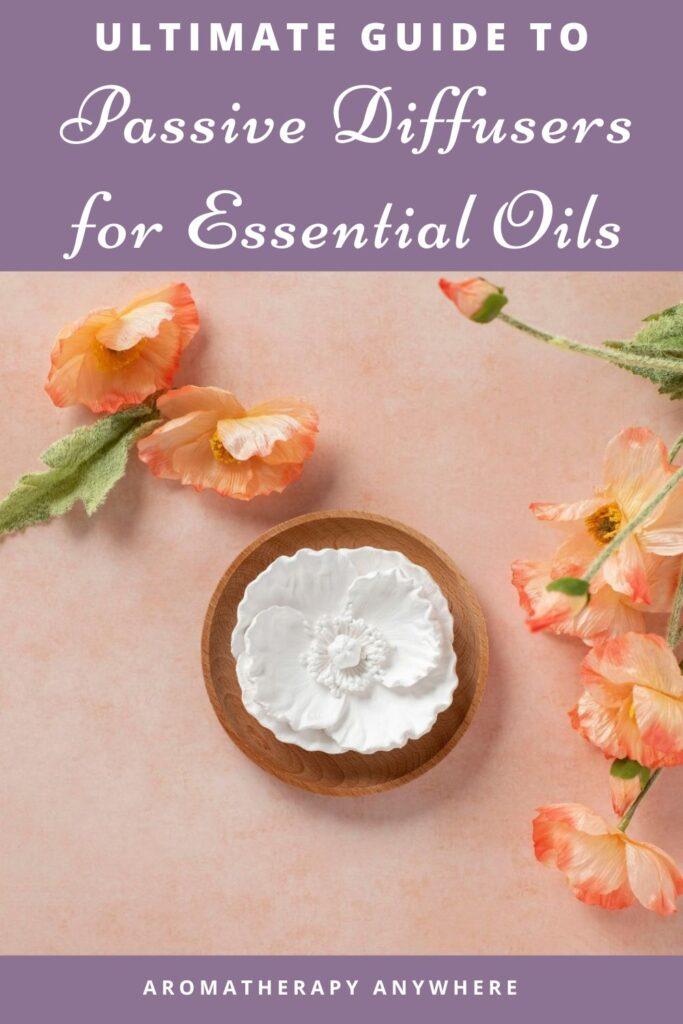 Disclaimer: This information is not intended to serve as medical advice. Please consult your physician before using essential oils. See Full Disclaimer here.
Disclaimer: This information is not intended to serve as medical advice. Please consult your physician before using essential oils. See Full Disclaimer here.


